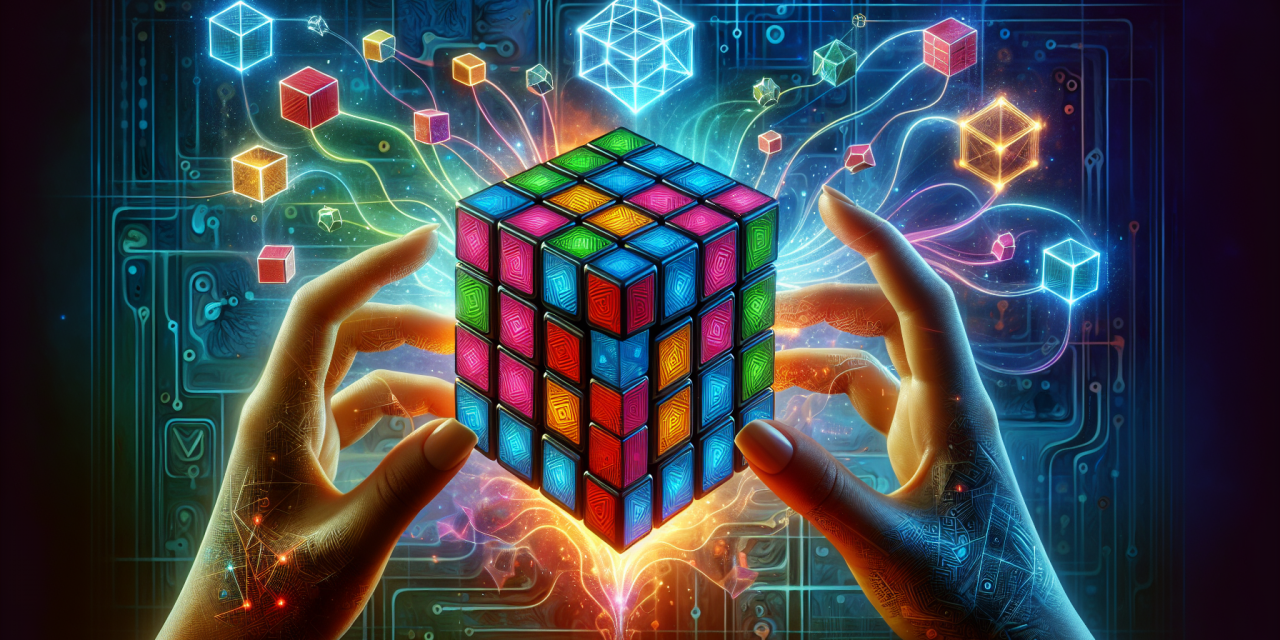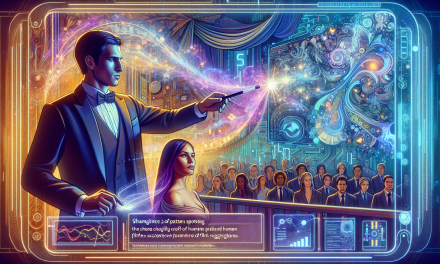Picture this: you’re staring at a seemingly impossible puzzle, a colorful cube with 43 quintillion possible combinations, and somehow—through pure logical thinking—you manage to solve it. That satisfying click of the final piece falling into place isn’t just triumph over plastic and springs. It’s your brain learning to think like a computer scientist.
When Hungarian architecture professor Ernő Rubik invented his famous cube in 1974, he had no idea he was creating what would become the world’s best-selling puzzle toy. More importantly, he couldn’t have predicted that his “Magic Cube” would become a hands-on training ground for the exact kind of thinking that makes great programmers, problem-solvers, and creative technologists.
The Accidental Genius of Spatial Logic
Rubik originally designed his cube as a teaching tool to help his students understand three-dimensional geometry. He wanted them to see how individual pieces could move independently while remaining part of a larger structure—a concept that sounds remarkably familiar if you’ve ever worked with objects in programming.
Think of it this way: every colored square on a Rubik’s Cube is like a variable in a program. Each variable has its current state (position and color), and through a series of logical operations (twists and turns), you can change that state. But here’s the crucial part—just like in coding, every move affects the system as a whole. Change one variable, and you might accidentally mess up something else you’d already fixed.
This is exactly the kind of systems thinking that separates good coders from great ones. When you’re debugging a program, you can’t just focus on one line of code in isolation. You need to understand how your changes ripple through the entire system, just like how one twist of the cube affects multiple faces at once.
Pattern Recognition: The Cube’s Secret Curriculum
Watch someone solve a Rubik’s Cube for the first time, and you might think they’re performing magic. But experienced solvers know the truth: it’s all about recognizing patterns and applying the right sequence of moves—or as we call them in the coding world, algorithms.
Most cube-solving methods break down the solution into smaller, manageable chunks. First, you solve the white cross. Then the white corners. Then the middle layer, and so on. Sound familiar? This is exactly how programmers approach complex problems—by breaking them down into smaller, solvable pieces.
Each stage of cube-solving requires its own set of algorithms—specific sequences of moves that transform one pattern into another. A beginner might memorize these sequences without fully understanding why they work, much like how new programmers often copy and paste code snippets. But as you get better, you start to understand the underlying logic, and you can adapt these patterns to new situations you’ve never encountered before.
This progression from memorization to understanding to creative adaptation mirrors perfectly how we learn to code. First, we follow tutorials step by step. Then we understand why those steps work. Finally, we can write our own solutions to brand new problems.
The Persistence Engine
Here’s something every Rubik’s Cube enthusiast knows: you will mess up. A lot. You’ll be one move away from solving a face, and then—whoops—you’ll accidentally scramble something you’d already completed. That moment of frustration when you realize you’ve taken a step backward is universal, whether you’re twisting plastic squares or debugging stubborn code.
But here’s what the cube teaches us that’s invaluable for coding: failure isn’t really failure—it’s data. Every “mistake” with the cube teaches you something about how the system works. You learn which moves undo others, which sequences work together, and most importantly, you develop the mental resilience to keep trying even when progress feels impossible.
In programming, we call this debugging mindset. When your code doesn’t work the first time (and trust us, it rarely does), you don’t throw in the towel. You examine what went wrong, form a hypothesis about why it happened, try a different approach, and repeat until you find the solution. The cube trains this exact mental muscle, building what psychologists call “grit”—the combination of passion and perseverance for long-term goals.
Spatial Reasoning and the Programmer’s Mind
Something interesting happens in your brain when you regularly manipulate three-dimensional puzzles like the Rubik’s Cube. You develop stronger spatial reasoning skills—the ability to visualize and mentally manipulate objects in space. While this might seem unrelated to coding, it’s actually crucial for understanding how data flows through programs, how different parts of your code connect, and how to design user interfaces that make intuitive sense.
Think about how you navigate through a complex folder structure on your computer, or how you visualize the relationship between different functions in your program. These are all spatial reasoning tasks. The cube trains your brain to hold complex three-dimensional relationships in working memory while planning several moves ahead—a skill that translates beautifully to architecting software systems.
Many successful programmers report that they “see” their code as architectural structures in their mind. Functions become rooms, data flows become corridors, and debugging becomes a process of mentally walking through these spaces to find where things go wrong. The cube exercises these same mental muscles in a tangible, physical way.
The Culture of Elegant Solutions
Perhaps most importantly, Rubik’s Cube culture celebrates something that’s at the heart of good programming: elegant solutions. Yes, you can solve a cube by memorizing dozens of algorithms and mechanically applying them. But the most satisfying solutions are the ones that accomplish more with fewer moves—just like how the most satisfying code accomplishes complex tasks with simple, readable logic.
Speed cubers—those amazing people who can solve the cube in under ten seconds—don’t just know more algorithms than the rest of us. They understand the cube at a deeper level, allowing them to recognize patterns faster and choose more efficient solution paths. They’ve developed what programmers call “code sense”—an intuitive understanding of which approaches will work better before you even try them.
This pursuit of elegance and efficiency isn’t just about showing off. It’s about training your brain to see beyond the first solution that works and to keep asking, “Is there a better way?” This question drives innovation in both cube-solving and software development.
From Cube to Code: The Making of Problem Solvers
The beautiful thing about the Rubik’s Cube is that it makes computational thinking feel like play. You’re not sitting at a computer screen memorizing syntax rules. You’re manipulating a physical object, feeling the satisfaction of each correct move, and experiencing the instant visual feedback when patterns align correctly.
This hands-on approach to logical thinking creates a different kind of understanding—one that’s rooted in physical experience and emotional satisfaction rather than abstract concepts. When you later encounter similar logical challenges in coding, your brain already has a framework for approaching them confidently.
The cube teaches us that complex systems can be understood and mastered through patient observation, logical analysis, and persistent practice. It shows us that there’s often more than one way to reach a solution, and that the most elegant path isn’t always the most obvious one.
Every twist of Rubik’s colorful creation strengthens the same neural pathways that help us debug code, design algorithms, and approach any complex problem with confidence. In a world increasingly shaped by computational thinking, perhaps the humble cube deserves recognition not just as a toy, but as one of our most effective teachers of the mindset that makes great problem solvers.
Programming in 3D: Advanced Rubik’s Cube Concepts
Beyond the basic solving methods lies a fascinating world of advanced Rubik’s Cube programming concepts that mirror sophisticated software development practices:
Algorithmic Optimization
Just as programmers optimize code for performance, speedcubers develop increasingly efficient algorithms. The famous CFOP method (Cross, F2L, OLL, PLL) demonstrates how complex problems can be decomposed into manageable sub-algorithms.
State Management
Every configuration of the cube represents a unique state in a massive state space. Learning to navigate between states efficiently teaches the same principles used in:
- Database transactions
- Version control systems
- Game state management
- Machine learning optimization
Pattern-Based Problem Solving
Advanced cubers recognize subtle patterns that beginners miss entirely. This pattern recognition directly translates to:
- Code refactoring opportunities
- Bug pattern identification
- Architecture design patterns
- Data structure optimization
Video Resources: Master the Programming Mindset
Here are essential videos that demonstrate the programming principles inherent in Rubik’s Cube solving:
Understanding Algorithms Through Cube Solving:
Pattern Recognition and Logic Development:
Advanced Problem-Solving Strategies:
The Mathematics of Systematic Thinking:
Frequently Asked Questions
How long does it take to learn programming concepts through cube solving?
Most people begin recognizing algorithmic patterns within 2-3 weeks of regular practice. The logical thinking improvements become apparent even sooner.
Do I need to become a speedcuber to gain programming benefits?
Not at all! Even learning to solve the cube at a casual pace develops the core thinking skills that benefit programmers.
Which programming languages benefit most from cube-solving skills?
The logical thinking and pattern recognition skills transfer to all programming languages, but they’re particularly valuable for:
- Python (for algorithm development)
- JavaScript (for state management)
- C++ (for optimization challenges)
- SQL (for complex query logic)
Can cube solving help with specific programming challenges?
Yes! Cube solving particularly helps with:
- Debugging complex state-dependent bugs
- Designing recursive algorithms
- Understanding graph traversal problems
- Optimizing nested loops
Is there scientific evidence supporting these connections?
Research in cognitive science shows that spatial reasoning tasks like cube solving strengthen working memory and logical reasoning—both crucial for programming success.
Recommended Further Reading
Programming and Logic:
- “The Art of Computer Programming” by Donald Knuth
- “Structure and Interpretation of Computer Programs” by Abelson & Sussman
- “Algorithms to Live By” by Brian Christian
Spatial Reasoning and Problem Solving:
- “Mindset: The New Psychology of Success” by Carol Dweck
- “Peak: Secrets from the New Science of Expertise” by Anders Ericsson
- “The Rubik’s Cube Solution” by David Singmaster
Cognitive Science and Learning:
- “Thinking, Fast and Slow” by Daniel Kahneman
- “The Organized Mind” by Daniel Levitin
- “Make It Stick” by Peter Brown
Start Your Programming Journey Today
Ready to unlock your programming potential through the power of the Rubik’s Cube? Here’s your action plan:
Week 1-2: Learn the basic layer-by-layer method. Focus on understanding why each algorithm works, not just memorizing moves.
Week 3-4: Practice recognizing patterns without looking at guides. This builds the same intuitive pattern recognition used in debugging code.
Week 5-6: Time yourself and work on optimization. This mirrors the performance optimization mindset crucial in software development.
Week 7+: Explore advanced methods like CFOP or Roux. The complexity management skills you develop here directly transfer to handling large codebases.
The cube isn’t just teaching you to solve a puzzle—it’s rewiring your brain to think like a programmer. Every algorithm you master, every pattern you recognize, and every optimization you discover strengthens the same neural pathways that will make you a more effective coder.
Start today. Pick up a cube, watch the recommended videos, and begin your journey into computational thinking. Your future programming self will thank you for building this foundation of logical reasoning, pattern recognition, and persistent problem-solving.
After all, whether you’re aligning colored squares or writing elegant code, you’re really doing the same thing: transforming chaos into order, one logical step at a time.








